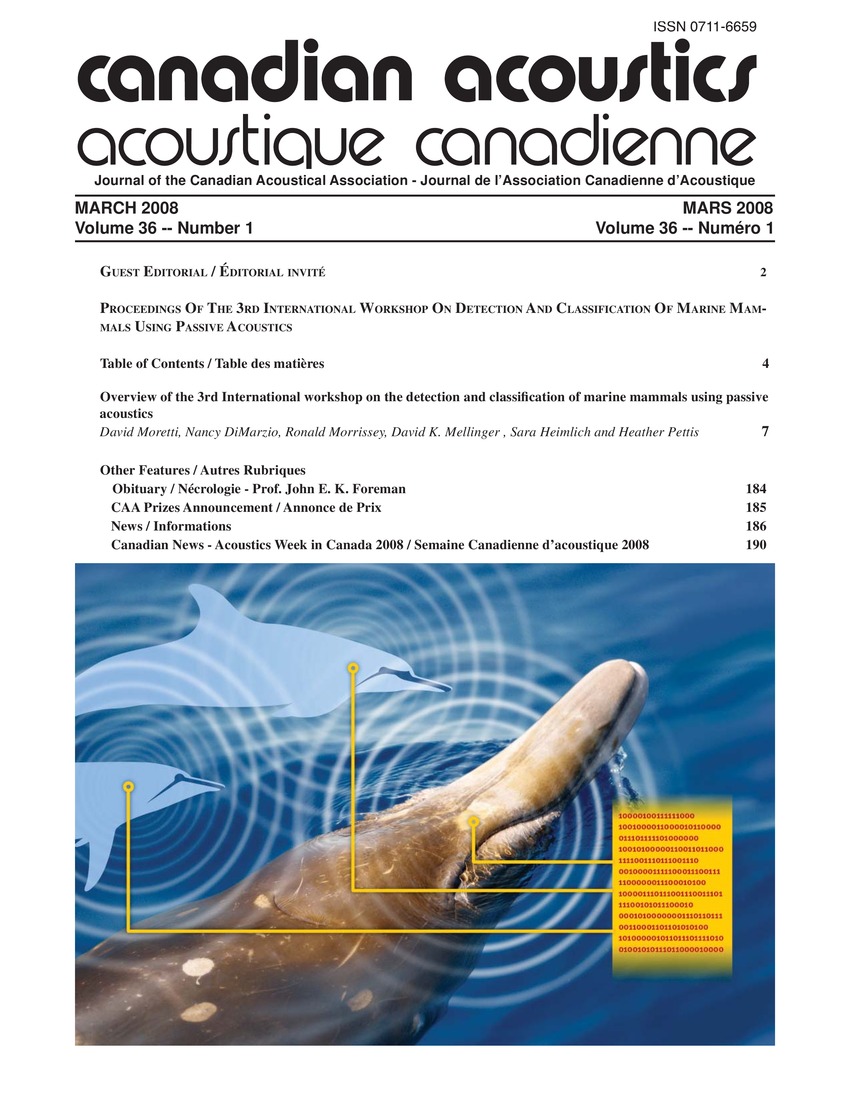A comparison of pitch extraction methodologies for dolphin vocalization
Mots-clés :
Amplitude modulation, Hidden Markov models, Mammals, Markov processes, Mathematical programming, Signal to noise ratio, Signaling, Systems engineering, Wavelet transforms, Frequency ranging, Pitch extractionRésumé
Pour la collecte et l'analyse de vocalises de mamifères marins, l'extraction de la fondamentale est une étape cruciale. Dans le cas des dauphins, nous pouvons considérer qu'il y a deux types de sons voisés : les chants qui peuvent être décrits comme des tonalités AM-FM, et les rafales ("bursts") constituées de signaux hautement harmoniques. La première des trois difficultés pour extraire le timbre est le très faible rapport signal sur bruit dû aux reflections multiples et autres interférences. La seconde consiste à appréhender les résolutions harmoniques sur le signal de cétacés par rapport aux traitements connus en parole par exemple. Dans ce papier, nous testons notre nouvelle méthode d'extraction de timbre sur un modèle Chaîne de Markov Cachée Hièrarchique à partir de coefficient cepstraux. Nous comparons nos résultats à la méthode YIN basée sur un calcul d'autocorrélation, et à get_f0 qui est extracteur de timbre classique par programmation dynamique utilisant des coefficients LPC. Nous montrons que notre méthode apporte un gain de 10% par rapport à ces méthodes.Fichiers supplémentaires
Publié-e
Comment citer
Numéro
Rubrique
Licence
Author Licensing Addendum
This Licensing Addendum ("Addendum") is entered into between the undersigned Author(s) and Canadian Acoustics journal published by the Canadian Acoustical Association (hereinafter referred to as the "Publisher"). The Author(s) and the Publisher agree as follows:
-
Retained Rights: The Author(s) retain(s) the following rights:
- The right to reproduce, distribute, and publicly display the Work on the Author's personal website or the website of the Author's institution.
- The right to use the Work in the Author's teaching activities and presentations.
- The right to include the Work in a compilation for the Author's personal use, not for sale.
-
Grant of License: The Author(s) grant(s) to the Publisher a worldwide exclusive license to publish, reproduce, distribute, and display the Work in Canadian Acoustics and any other formats and media deemed appropriate by the Publisher.
-
Attribution: The Publisher agrees to include proper attribution to the Author(s) in all publications and reproductions of the Work.
-
No Conflict: This Addendum is intended to be in harmony with, and not in conflict with, the terms and conditions of the original agreement entered into between the Author(s) and the Publisher.
-
Copyright Clause: Copyright on articles is held by the Author(s). The corresponding Author has the right to grant on behalf of all Authors and does grant on behalf of all Authors, a worldwide exclusive license to the Publisher and its licensees in perpetuity, in all forms, formats, and media (whether known now or created in the future), including but not limited to the rights to publish, reproduce, distribute, display, store, translate, create adaptations, reprints, include within collections, and create summaries, extracts, and/or abstracts of the Contribution.


